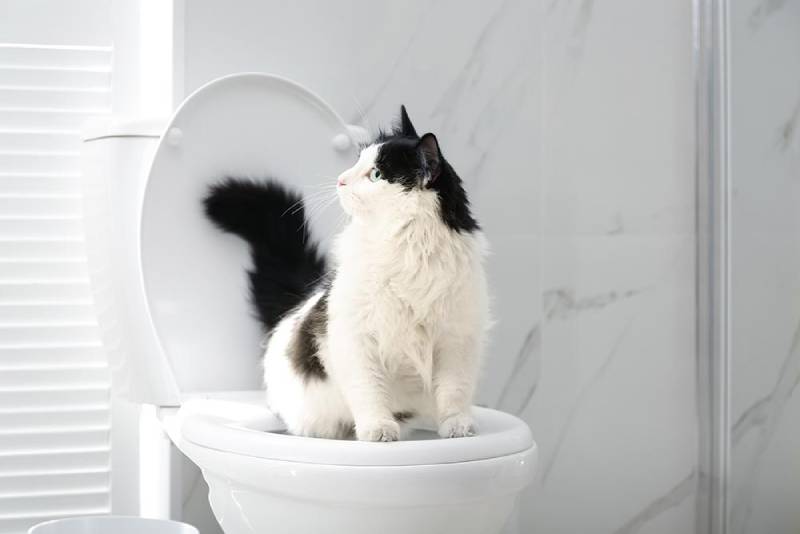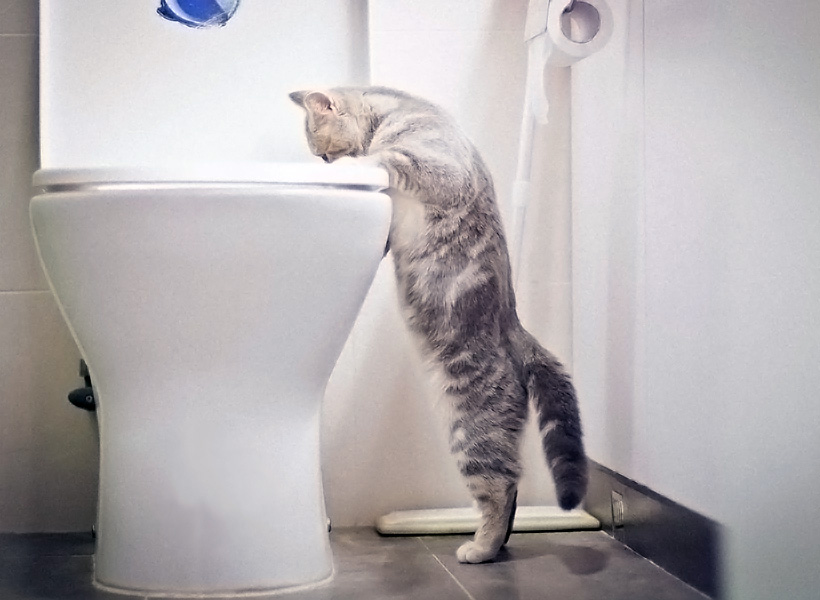The Risks of Flushing Cat Poop in Your Toilet - Preventive Steps
The Risks of Flushing Cat Poop in Your Toilet - Preventive Steps
Blog Article
Just how do you really feel when it comes to Can You Flush Cat Poo or Litter Down the Toilet??

Intro
As feline owners, it's vital to be mindful of just how we dispose of our feline pals' waste. While it may seem hassle-free to flush cat poop down the commode, this technique can have damaging repercussions for both the atmosphere and human health and wellness.
Alternatives to Flushing
Fortunately, there are much safer and much more responsible means to dispose of feline poop. Consider the adhering to options:
1. Scoop and Dispose in Trash
One of the most typical approach of throwing away cat poop is to scoop it into an eco-friendly bag and toss it in the trash. Make certain to make use of a devoted trash inside story and throw away the waste promptly.
2. Use Biodegradable Litter
Select biodegradable pet cat litter made from products such as corn or wheat. These litters are environmentally friendly and can be safely taken care of in the garbage.
3. Hide in the Yard
If you have a lawn, take into consideration burying pet cat waste in a marked location away from vegetable yards and water resources. Make sure to dig deep sufficient to prevent contamination of groundwater.
4. Install a Pet Waste Disposal System
Buy a pet garbage disposal system particularly developed for feline waste. These systems use enzymes to break down the waste, reducing odor and environmental influence.
Health and wellness Risks
Along with environmental worries, flushing feline waste can additionally position wellness threats to humans. Feline feces may have Toxoplasma gondii, a parasite that can create toxoplasmosis-- a potentially extreme health problem, particularly for expecting women and people with weakened immune systems.
Environmental Impact
Purging pet cat poop presents damaging virus and parasites into the water, presenting a substantial risk to water ecological communities. These impurities can negatively affect aquatic life and compromise water high quality.
Final thought
Accountable pet dog possession expands beyond providing food and shelter-- it also entails correct waste monitoring. By avoiding purging feline poop down the toilet and choosing alternate disposal methods, we can minimize our ecological footprint and safeguard human health and wellness.
Why Can’t I Flush Cat Poop?
It Spreads a Parasite
Cats are frequently infected with a parasite called toxoplasma gondii. The parasite causes an infection called toxoplasmosis. It is usually harmless to cats. The parasite only uses cat poop as a host for its eggs. Otherwise, the cat’s immune system usually keeps the infection at low enough levels to maintain its own health. But it does not stop the develop of eggs. These eggs are tiny and surprisingly tough. They may survive for a year before they begin to grow. But that’s the problem.
Our wastewater system is not designed to deal with toxoplasmosis eggs. Instead, most eggs will flush from your toilet into sewers and wastewater management plants. After the sewage is treated for many other harmful things in it, it is typically released into local rivers, lakes, or oceans. Here, the toxoplasmosis eggs can find new hosts, including starfish, crabs, otters, and many other wildlife. For many, this is a significant risk to their health. Toxoplasmosis can also end up infecting water sources that are important for agriculture, which means our deer, pigs, and sheep can get infected too.
Is There Risk to Humans?
There can be a risk to human life from flushing cat poop down the toilet. If you do so, the parasites from your cat’s poop can end up in shellfish, game animals, or livestock. If this meat is then served raw or undercooked, the people who eat it can get sick.
In fact, according to the CDC, 40 million people in the United States are infected with toxoplasma gondii. They get it from exposure to infected seafood, or from some kind of cat poop contamination, like drinking from a stream that is contaminated or touching anything that has come into contact with cat poop. That includes just cleaning a cat litter box.
Most people who get infected with these parasites will not develop any symptoms. However, for pregnant women or for those with compromised immune systems, the parasite can cause severe health problems.
How to Handle Cat Poop
The best way to handle cat poop is actually to clean the box more often. The eggs that the parasite sheds will not become active until one to five days after the cat poops. That means that if you clean daily, you’re much less likely to come into direct contact with infectious eggs.
That said, always dispose of cat poop in the garbage and not down the toilet. Wash your hands before and after you clean the litter box, and bring the bag of poop right outside to your garbage bins.
https://trenchlesssolutionsusa.com/why-cant-i-flush-cat-poop/

We hope you enjoyed reading our post about How to Dispose of Cat Poop and Litter Without Plastic Bags. Thanks so much for taking the time to read through our post. Feel free to take the opportunity to distribute this post if you enjoyed reading it. Bless you for your time. Kindly stop by our site back soon.
Schedule Free Estimate Report this page